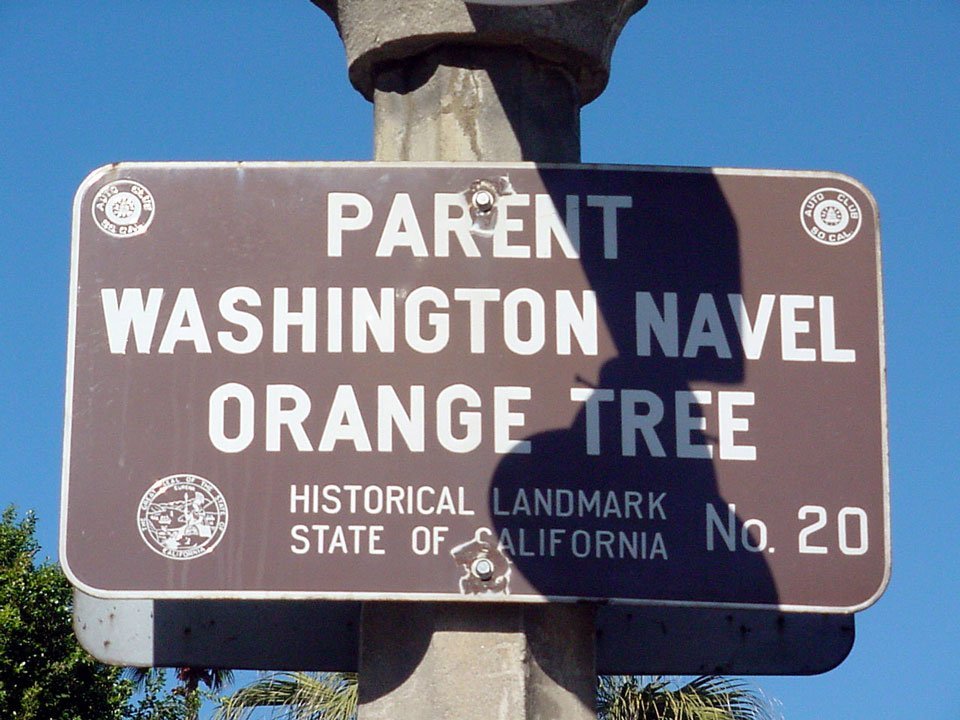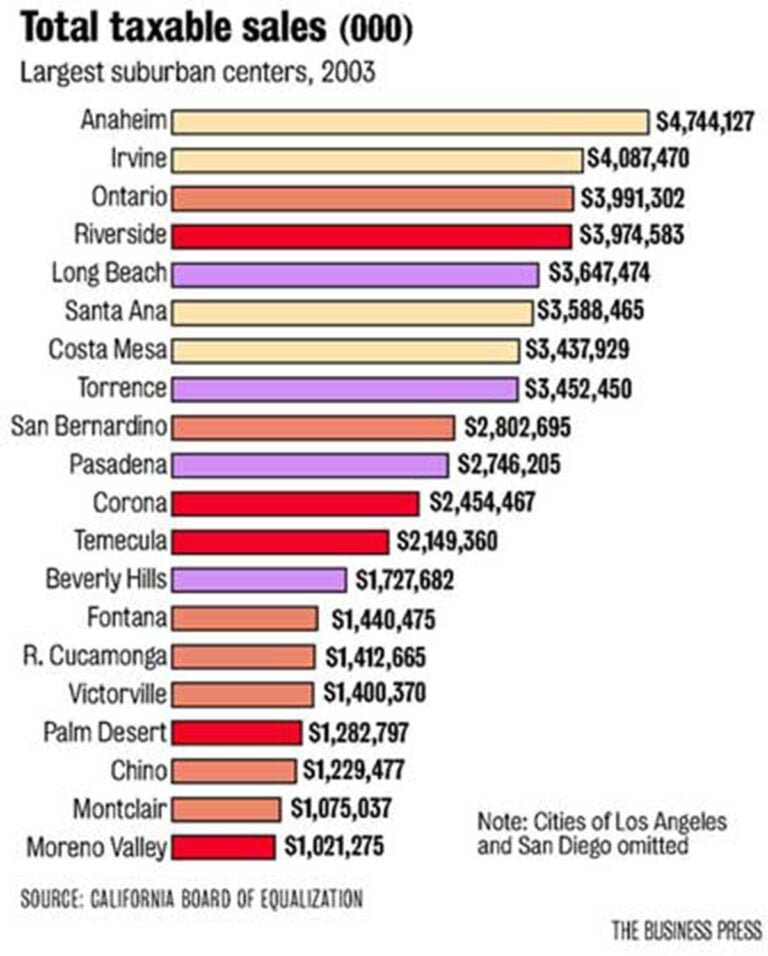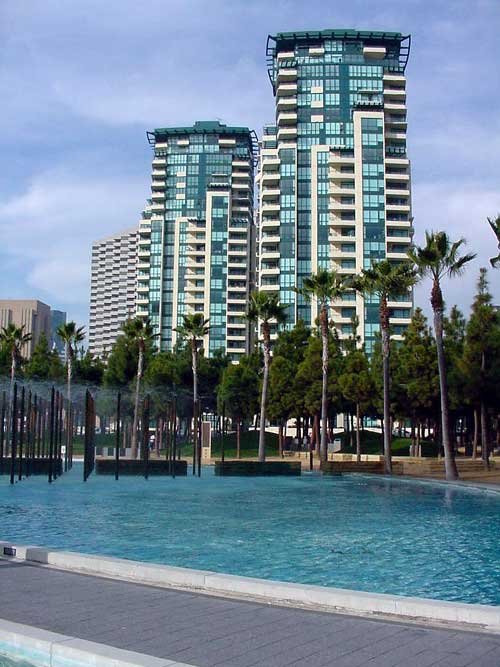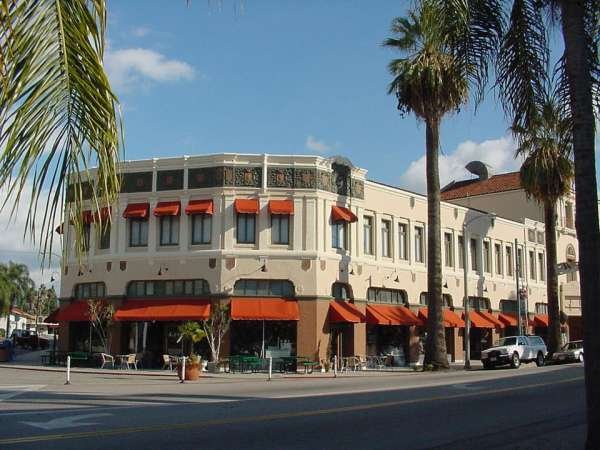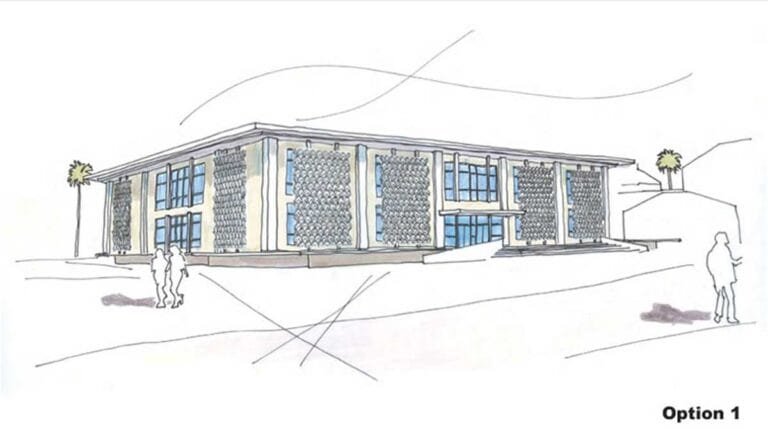Riverside’s navel orange
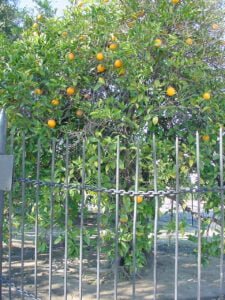
From a recent edition of the Los Angeles Times:
The bronze plaque tells the tale: “The most valuable fruit introduction yet made by the United States Department of Agriculture.”
And there, at Magnolia and Arlington avenues in Riverside, stands the last of California’s original Washington navel orange trees, enclosed by an iron fence, looming over the plaque in the summer sun.
It is the tree that launched the storied citrus industry in the Riverside area, an industry that helped shape the world’s view of Southern California as a tropical paradise in the early 20th century.
Los Angeles Times – August 5, 2004
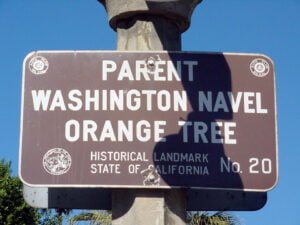
For those who don’t know, from this very navel orange tree (and a second sibling tree that died long ago) descended every Washington Navel orange tree in California, spawning California’s highly-successful — and very lucrative — navel orange industry. Some historians have referred to it as the second “gold rush” for California.
Related
- Los Angeles Times – A navel worth gazing at: Tree made history (Aug. 5)
- Riverside – California Citrus State Historic Park
- 2019 Update: Riverside Press-Enterprise – Riverside parent navel orange tree getting new protection (June 6)
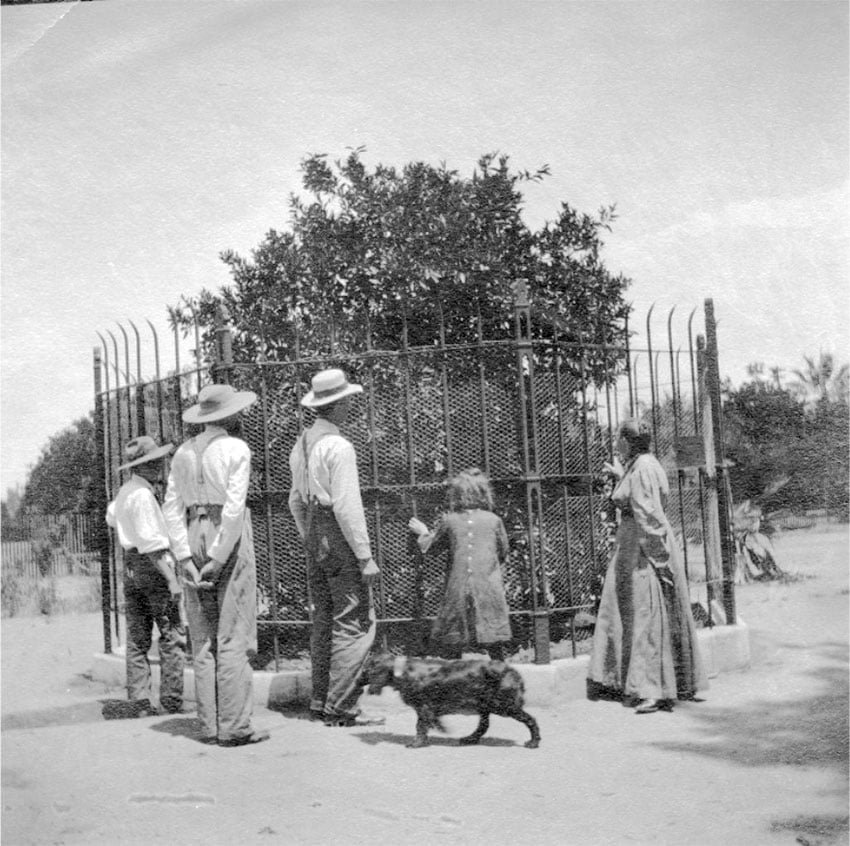
Slideshow: 2011 – Riverside’s Citrus Legacy
11f-map-2011-riv-groves-003-800.jpg
As crop production profits declined and land values increased, Riverside voters enacted Prop R in 1979 to limit development within the city's "Arlington Heights" greenbelt. Strict density limits have helped maintain large tracts of open land, some of whicn now contain large "orange grove estate" homes. (2011 - Bing Maps)
Sources: Los Angeles Times (LAT-20040805), California Citrus State Historic Park; NOTE: Published dates for some online versions of newspaper articles cited may not match their archival source date.
2024 PAGE UPDATE: Added additional info/context; added link to June 2019 news article; removed outdated link to photo gallery and added 2011 photo slideshow.

